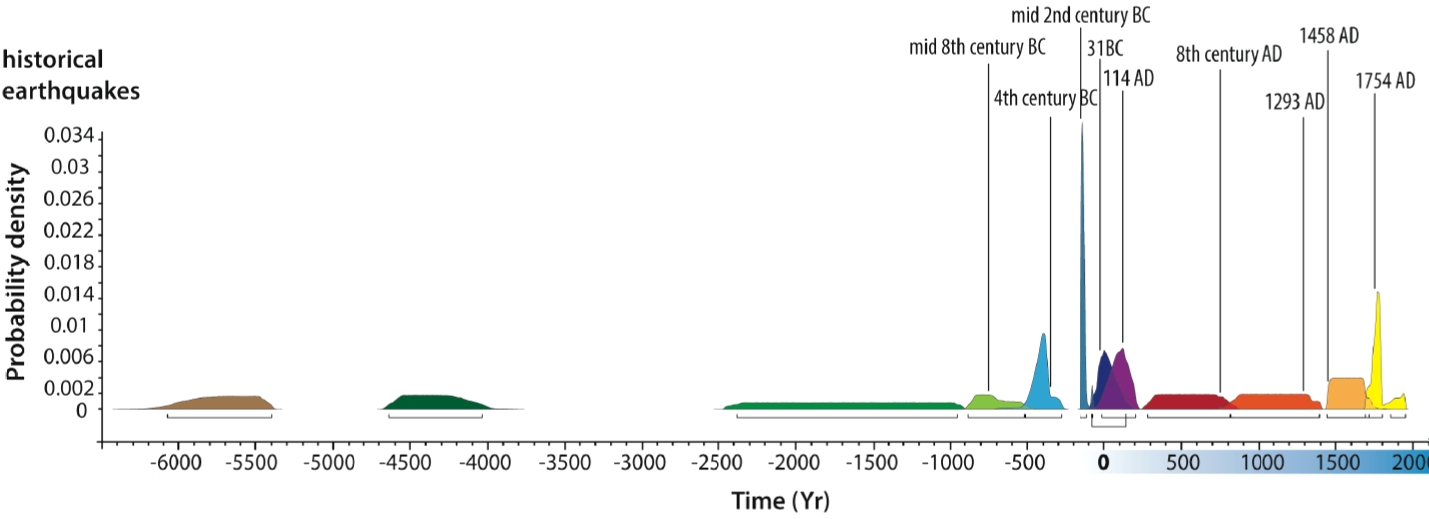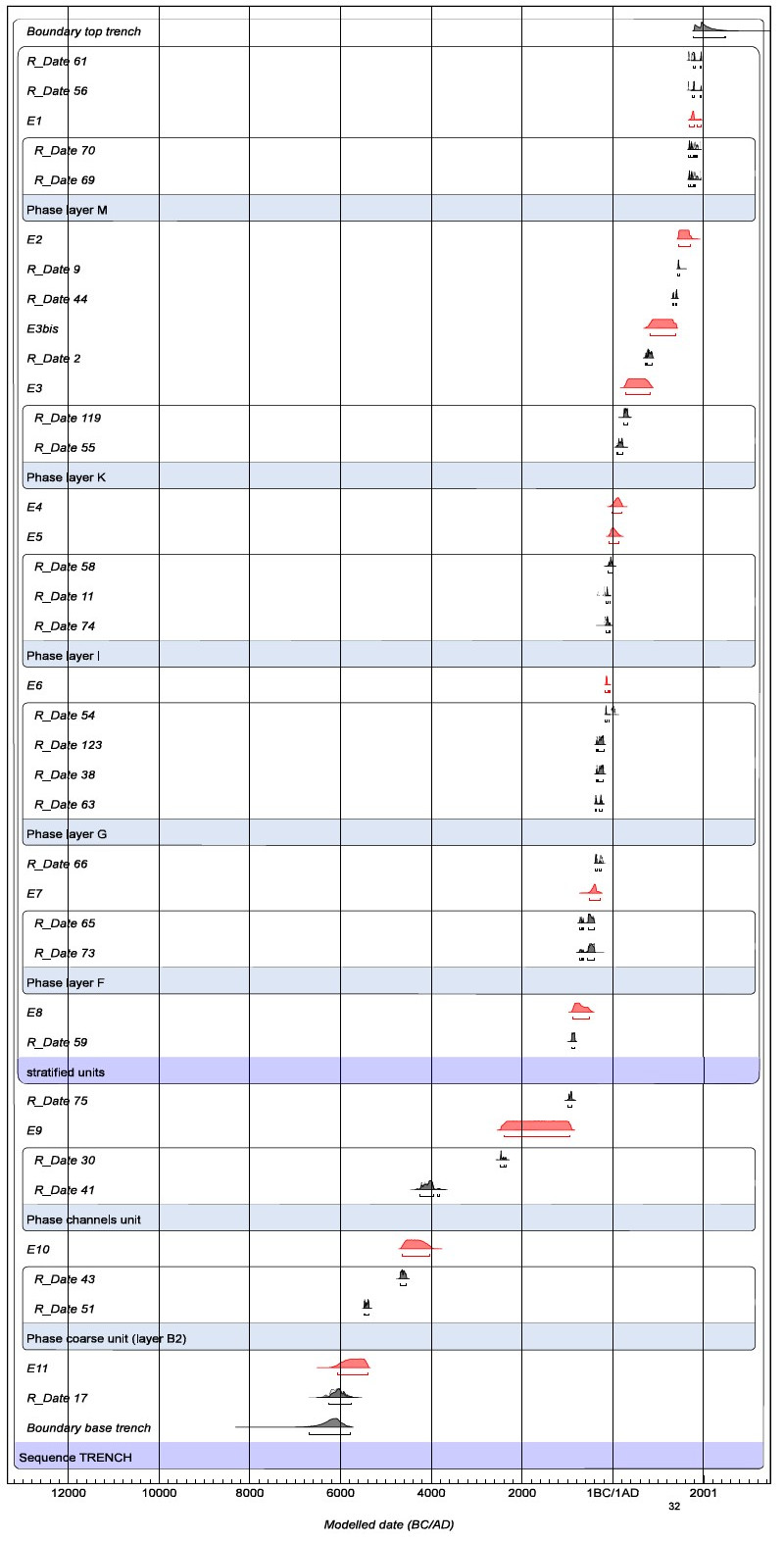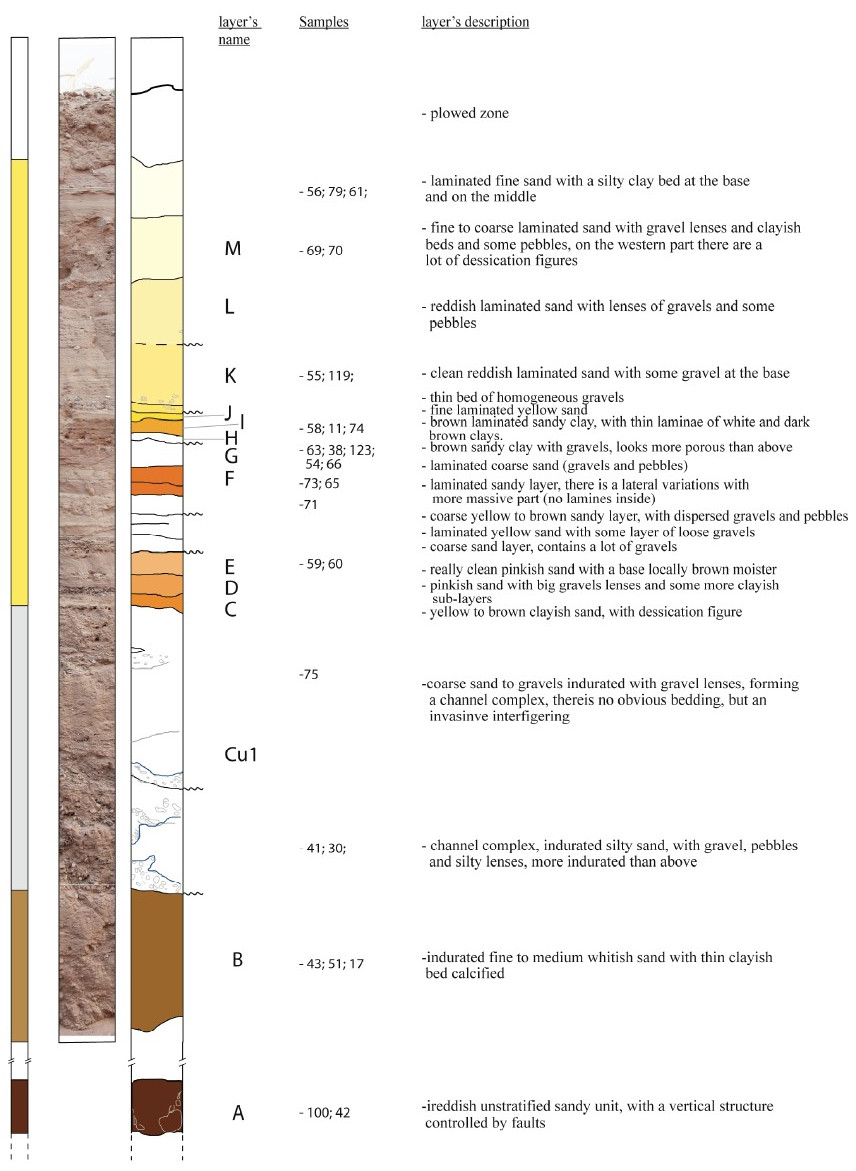Taybeh Trench

Figure S5
Computed age model from OxCal v4.26 for the seismic events recorded in the trench.
LeFevre et al. (2018)
Maps, Aerial Views, Age Model, Trench Log, Trench Photomosaic, and Stratigraphic Column
Maps and Aerial Views
- Fig. 2 Location Map from
Lefevre (2018)

 Figure 2
Figure 2
Topographic map of the Wadi Araba from SRTM3 (pixel size, ~90m) with lateral extent of historical earthquakes based on events identifed in trenches and in historical accounts. Locations of the 1068 AD, 1212 AD, 363 AD events not identifed in the Taybeh trench are from Klinger et al. The Wadi Araba fault segments were reproduce afer Le Béon et al.. The Jabal al-Risha compressional jog and the Yotvata extensional jog appear to act like stopping/initiation points for many ruptures, although larger earthquakes seem to be able to break through. WM: Wadi Musa. Figure was generated with Adobe illustrator CS6 - Taybeh Trench in Google Earth
Age Model

Figure S4
Age model computed for the trench stratigraphy using OxCal v4.2 and IntCal13 calibration curve. Dark grey indicates modeled ages including stratigraphic information and red are the modeled age for seismic events. Phases indicate subsets of samples where no stratigraphic order is imposed.
LeFevre et al (2018)
Trench Log

Figure 1
(a) Detailed log of the southern wall of the trench. Units are differentiated according to facies. White dots indicate locations of 14C samples collected from both walls (the samples collected from the northern wall are represented at a stratigraphically and structurally equivalent location on the southern wall log).
(b) Simplified stratigraphic section of the trench, only the four main units are represented, in dark brown the unstratified unit associated to push-up, in light brown the coarse alluvial unit, in white the channelized unit, and in yellow the succession of flat sandy layers.
Inset map shows the Levantine area with the entire Dead Sea fault, tectonic features are derived from Garfunkel et al. (1981), the red square highlights the Wadi Araba and correspond to the location of Fig. 2, the site of Taybeh is marked (T).
LeFevre et al (2018)
Annotated Trench photomosaic

Figure S2
Photomosaic of the trench southern wall (top) and mapping of stratigraphic 1058 layers, faults, and earthquakes (bottom). The event horizons associated to the seismic 1059 events recorded in the trench are indicated in red on the stratigraphic log.
LeFevre et al (2018)
Stratigraphic Column

Figure S3
Stratigraphic log of the trench, on the left simplified log with the limits of the four main units, and then the complete log is represented. Letters A to M names the different stratigraphic layers. The layers are quite continuous laterally along the trench, the 14C samples dated in each layer are indicated.
LeFevre et al (2018)
Master Seismic Events Table
